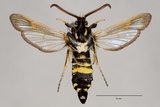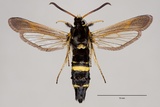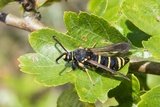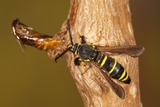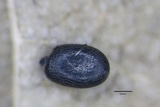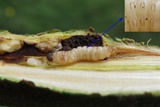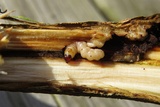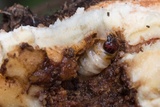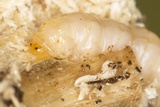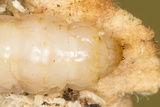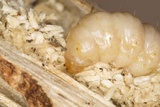Paranthrene tabaniformis (Rottemburg, 1775) Species
Last modified: Nov. 21, 2025, 6:21 p.m.
P. tabaniformis is a common species throughout Belgium
This species is considered Least Concern according to the IUCN Red List category for Flanders 2023.
Details
- Classification
- Family: Sesiidae > Subfamily: Sesiinae > Tribus: Paranthrenini > Genus: Paranthrene > Species: Paranthrene tabaniformis
- Vernacular names
- Populierenwespvlinder (NL), Dusky Clearwing (EN), Petite Sésie du peuplier (FR), Kleiner Pappel-Glasflügler (DE)
- Synonyms
- Paranthrene asiliformis (Denis & Schiffermüller, 1775), nec (Rottemburg, 1775)
- First mention in Belgium
- De Sélys-Longchamps E. 1837. Catalogue des Lépidoptères ou Papillons de la Belgique, précédé du tableau des Libellulines de ce pays. — — : 1–29. On page 21 (as Sesia Asiliformis). view page
- Status
-
Native
Distribution
Imago
This is a very distinctive and fairly large species (20–37 mm) with completely dark brown or black forewings without transparent areas. The black abdomen has 3 (female) or 4 (male) clearly defined yellow bands.
In the afternoon, the males are strongly attracted to the pheromone developed for this species.
Mine
When living in a twig, the larva causes the formation of a lens-shaped swelling. Above this swelling a short gallery is gnawed in the centre of the twig.
If the caterpillar lives in a damaged (part of) a trunk, it mines between wood and bark constructing short galleries there.
Bionomics
Females lay their eggs on either younger twigs near a bud or on damaged parts of a tree trunk or branch. The young caterpillar bores into the plant and causes, when living in a young shoot, a swelling in it. This swelling, being sap-rich, serves as the food source while the short gallery constructed above the gall houses the caterpillar. Here the caterpillar pupates too, head down. The exit hole is in many cases at the side of the swelling.
But when living in damaged parts of a tree –sometimes even a cut tree– the larvae do not cause swellings but do make short galleries between bark and wood. With this way of life, a reasonable number of caterpillars can occur together, often extruding fair amounts of frass. Pupation then takes place head up so that hatching can take place from between bark and wood. In most cases the caterpillars hibernate twice but it is quite possible that offspring from early season females, developing in optimum conditions, can make it to imago after just one hibernation.
Flight periods
The adults fly between late May end mid-August and sometimes till early September.
Habitat
This species occurs everywhere the hostplants grow: gardens, parks, along roads and rivers, poplar plantations and so on.

